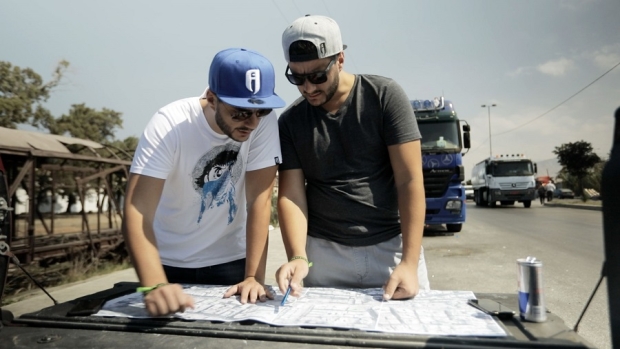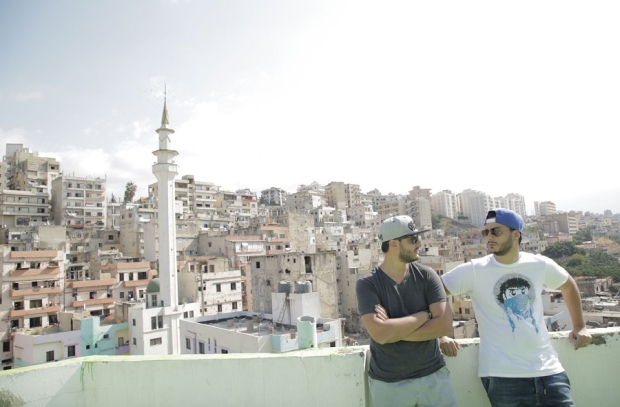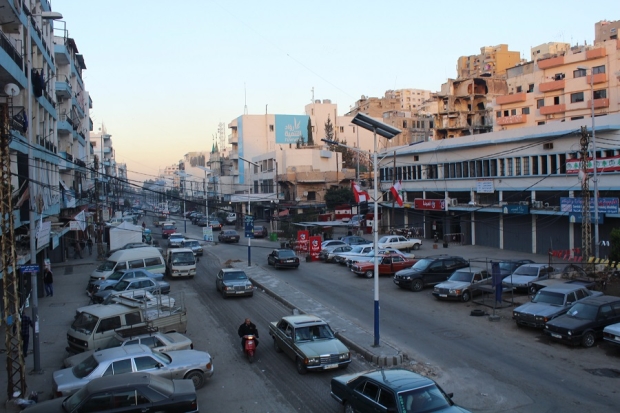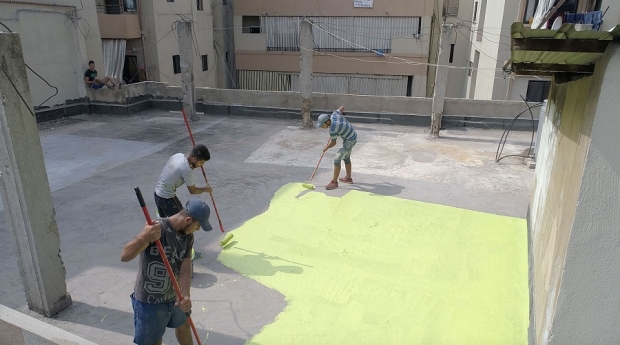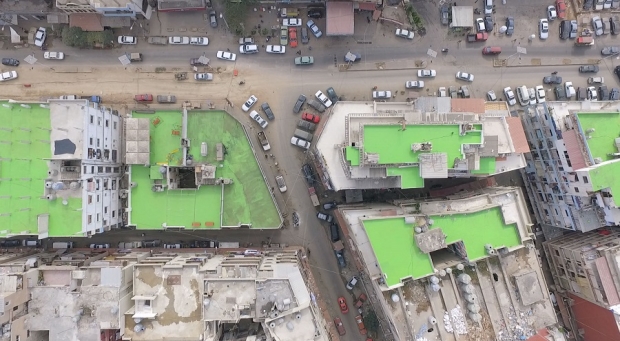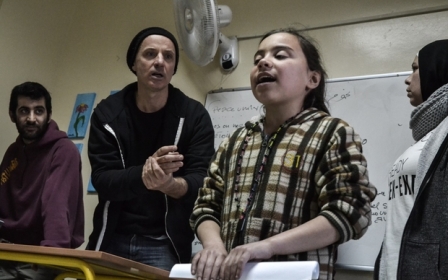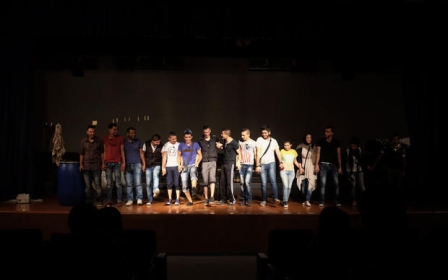Lebanese street artists spread message of peace
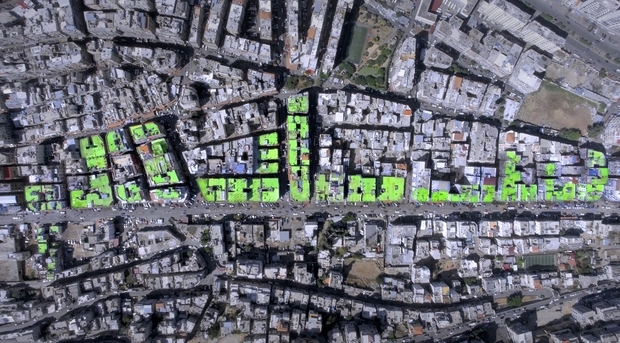
TRIPOLI, Lebanon - Created by innovative artists, Lebanon’s latest installation is taking creative pursuits to new heights - like the stratosphere.
Going by the name Ashekman, the Lebanese graffiti and hip-hop duo - who are also twin brothers - have painted the word salam, which means peace in Arabic, across 82 rooftops in the northern city of Tripoli.
Stretching across 1.3 kilometres, the design is only visible from the sky.
The idea behind "Operation Salam" - painted on buildings in war-torn neighbourhoods of Lebanon's second largest city - is to show another side of the country beyond war and extremism.
“In the media outlets talking about Lebanon, all you hear about is terrorism and extremism, all the negative aspects,” said artist Omar Kabbani, who along with his brother Mohamed, are behind the project.
“But there’s plenty of creativity, plenty of people trying to live their life… that’s why we used the word salam. I want to change people’s perception of us."
Yet while their interest was born out of war, now they want to use it for peace.
“It is not to say we just want peace in Tripoli. We want peace in all of Lebanon, in the region,” Omar said. “As street artists we have this responsibility to our society. People look up to us.”
Scouting locations
From the annual White Wall Beirut, a city-wide installation where international street artists from all over the world are invited to paint for a week to the work of local graffiti artists such as Yazan Halwani, street art is ubiquitous in Beirut. But in Tripoli it's a different story.
“The city doesn’t have artists who are interested that much in painting as a career because they can’t make much money out of it yet,” explained Tripoli-based artist Ali Rafei.
Scouting locations on Google Maps, they came to focus on the formerly divided neighbourhoods of Jabal Mohsen and Bab al-Tabbaneh.
If you go up on the rooftop, you see bullet holes
- Omar Kabbani, artist
"From there, it seemed as if everything fell into place. The entire narrative of the project was given deeper meaning, set in the area," Omar said.
“If you go up on the rooftop, you see bullet holes,” he said. “You see fresh traces…[of] hardcore militia fights.”
The neighbouring war in Syria, which began in 2011, opened old wounds on both sides in Tripoli. Bab al-Tabbaneh has historical links to Sunni-majority areas in Syria which have opposed President Bashar al-Assad, an Alawite. Tripoli’s Syria Street was the front line between the warring neighbourhoods where at least 200 people were killed in fighting since 2008.
The violence dwindled after the Lebanese army cracked down on militants in the city in 2014, followed by several raids. Local NGOs and civil society groups have also launched several initiatives since then, to bring the two communities together.
Operation Salam
It was important for Ashekman to hire people from both neighbourhoods to bring their vision to life. So they worked with March, a Lebanese NGO focused on free speech which has been working in the area since 2014, to recruit residents to participate.
There’s plenty of creativity, plenty of people trying to live their life… that’s why we used the word salam. I want to change people’s perception of us
- Omar Kabbani, artist
Now, the 32-year-old said that residents from the different neighbourhoods hang out together at Qahwetna, which means "our cafe" in Arabic, which March opened in 2016. He believes that business-based initiatives such as the cafe, where young people from both neighbourhoods work together, are the only way to help stop conflict.
“The project was really beautiful,” said Samir Hussein, 26, who also helped with the installation. Although it was hard work to clear rooftops of trash and debris, he said that little by little, projects like this will bring peace.
“Anything that allows you to express yourself in a positive manner or challenge yourself in a positive manner is incredible,” said Lea Baroudi, founder of March. “Street art is part of it. It has a guerrilla and an angry part of it. All of these youth have this [feeling] in them."
A career milestone
Describing the operation as a “milestone” in their career, Omar said that the project was nearly all self-funded.
“Whenever a commercial brand comes in on board, they want product placement,” Omar said. “What if next to the installation you say 'Sponsored by Pepsi'? People won’t take [the] artwork seriously.”
We couldn’t have executed it without the neighbourhood supporting us
-Lea Baroudi, founder of March
During the week and a half it took to clear the rooftops, Omar estimates that seven trucks left each day with rubbish. It took around three weeks to complete the installation.
“It was a nightmare,” said Omar. "Nobody is taking care of them, so why should they care?”
Another unexpected hurdle was convincing residents to participate. “It is a neglected area, so whenever they see an outsider coming, they are worried about their intention,” said Omar.
“We couldn’t have executed it without the neighbourhood supporting us,” said Baroudi. “It was not an easy task, quite honestly. It was very complicated logistically to convince everybody in the building."
“We always do social political messages on city walls and building murals,” said Omar. “But when you do something on this scale, on 83 rooftops, 1.3 kilometres in scale, it is so satisfying.”
Even though the green paint will slowly fade from the rooftops, the twins are content with the impermanence of their project, as they feel they accomplished something far greater.
“Everyone was witness to conflict, so they used to be afraid to go up on the rooftops [and] get shot,” said Omar. When the project was completed, even just “going up there was a [a source of] happiness".
New MEE newsletter: Jerusalem Dispatch
Sign up to get the latest insights and analysis on Israel-Palestine, alongside Turkey Unpacked and other MEE newsletters
Middle East Eye delivers independent and unrivalled coverage and analysis of the Middle East, North Africa and beyond. To learn more about republishing this content and the associated fees, please fill out this form. More about MEE can be found here.


